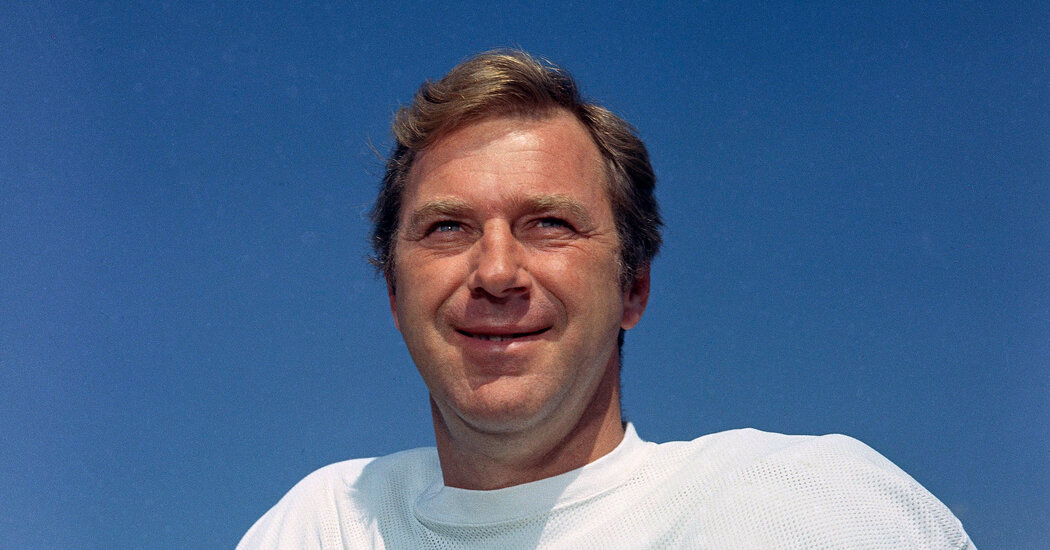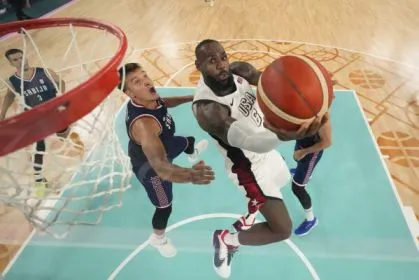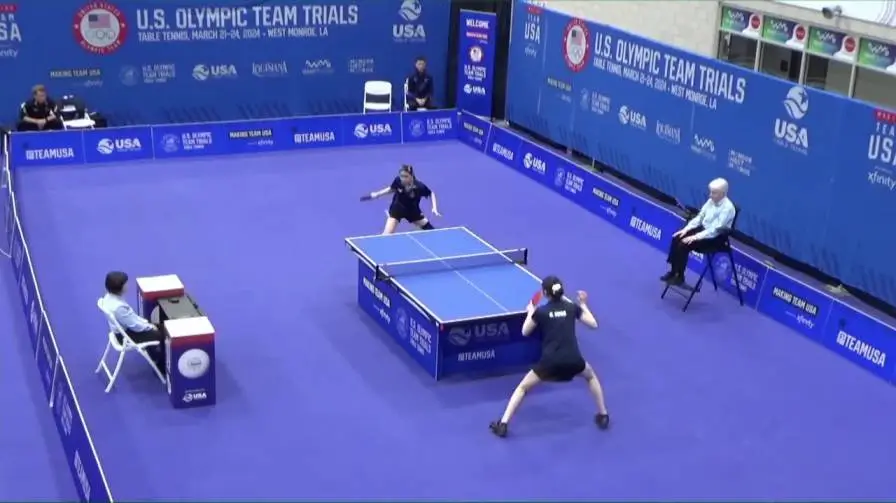
Jimmy Orr, a Favorite Target of the Colts’ Unitas, Dies at 85
Jimmy Orr, the Baltimore Colts’ receiver who teamed with quarterback Johnny Unitas in one of the N.F.L.’s leading passing combinations of the 1960s, died on Tuesday at his home in Brunswick, Ga., in the state’s coastal low country. He was 85.
His family confirmed his death.
The patch of the end zone at the closed part of Memorial Stadium, the Colts’ home in Orr’s day, became known as Orrsville or Orr’s Corner.
“I must have caught 45 or 50 touchdowns in that right corner,” he told The Baltimore Sun in 2009. “It was sloped some, a little downhill, which helped me speedwise. I wasn’t all that fast.”
At times, Orr celebrated a touchdown pass at his favorite spot by running along the top of the baseball Orioles’ nearby dugout.
Orr was just 5 feet 11 inches tall and 185 pounds, but he had sure hands and nimble feet in running routes. He gave the Colts a deep threat that complemented the pass catching of Raymond Berry, his fellow wide receiver; John Mackey, the tight end; and Lenny Moore coming out of the backfield. All three were future Hall of Famers, as was Unitas.
Orr led the N.F.L. in average yards per catch (27.6) in his rookie season, with the 1958 Pittsburgh Steelers, and again in 1964 and 1968 with the Colts, who obtained him in a trade after he played three seasons in Pittsburgh. He caught 66 touchdown passes and had 400 receptions over all.
But for all his game-breaking achievements, Orr was especially remembered for the frustration he experienced in one of pro football’s most memorable championship games: Super Bowl III, in January 1969, when the N.F.L. champion Colts were huge favorites over the Jets of the upstart American Football League.
The Colts were trailing the Jets, 7-0, in the final minute of the first half and had the ball on the Jets’ 41-yard line when they tried a trick play known as the flea-flicker. Earl Morrall, filling in for Unitas, who had a sore elbow, handed the ball to halfback Tom Matte, who ran toward the right, then lateraled it back to Morrall.
Orr, who had run down the left sideline, was alone around the Jets’ 10-yard line and frantically waved his arms in the hope that Morrall would throw to him. But Morrall did not spot him. He threw the football down the middle instead, toward fullback Jerry Hill. The Jets’ safety Jim Hudson intercepted at about the 12.
Unitas returned in the second half but could do little as the Jets went on to an astonishing 16-7 victory that established the credibility of the A.F.L.
Playing in the National Football League for 13 seasons, Orr averaged 19.8 yards per catch, at a time when the long-passing game had yet to become a staple of N.F.L. offenses, and amassed 7,914 yards in receptions. He was selected to the Pro Bowl in 1959 with the Steelers and in 1965 with the Colts, when he was named a first-team All Pro.
Orr retired after Super Bowl V, in January 1971, when the Colts defeated the Dallas Cowboys, 16-13.
James Edward Orr Jr. was born on Oct. 4, 1935, in Seneca, S.C., in the far western part of the state, to James and Margaret (James) Orr.
Playing for the University of Georgia, which had a conservative offense, he led the Southeastern Conference twice in pass receptions, with only 24 in 1955 and 16 in 1957.
The Los Angeles Rams selected Orr as a future pick in the 25th round of the 1957 N.F.L. draft, following his junior year. He played only briefly in the 1958 preseason, then was traded to the Steelers before the regular season began.
After his playing days, Orr was a broadcaster and assistant coach with the Atlanta Falcons and worked in the casino world. At one time he was an executive host at a casino in Gulfport, Miss.
He is survived by his wife, Maxine (McLaren) Orr; his daughter, Julie Orr Hoover; his son, James; his brother, Sam; five grandchildren; and two great-grandchildren.
Orr found his game-busting achievements amusing, since he wasn’t particularly fast.
“I’m glad I played football when I did,” he said in 2009, reflecting on workouts that included the 40-yard dash. “My time back then might not get me a tryout today. On the Colts, both Raymond Berry and I ran a 4.8.”
And then, referring to John Mackey, he added, “That might have been the only team in history where the tight end was faster than the two wide receivers.”








